A spider rig is a perfect option if you’re looking to add some height and interest to your next fishing trip. This versatile rig can be used for various fish, from smallmouth to largemouth, and is relatively easy to tie.
Wading into the sea with a fishing rod and reel can be thrilling. But the moment the lure hits the water, the excitement ends. The crappie fish swipes at the lure. It’s always a struggle to land the crappie fish. Well, for crappie fishermen, the Spider Rig is there to help them reel in bigger crappie fish.
Here, we will tell you everything you need to know about spider rigging crappie fishing equipment and how to tie the knot effectively. This easy-to-follow tutorial will teach you everything you need to know to tie a spider rig so you can start fishing more confidently. With this rigging system, you’ll be able to cast further, with greater accuracy, so you can start catching some serious fish.
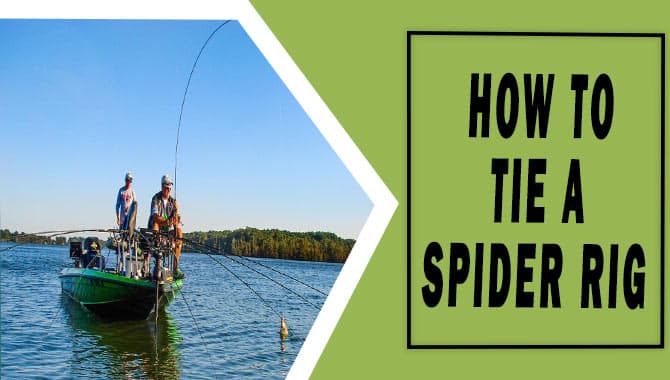
What Is Spider Rigging?
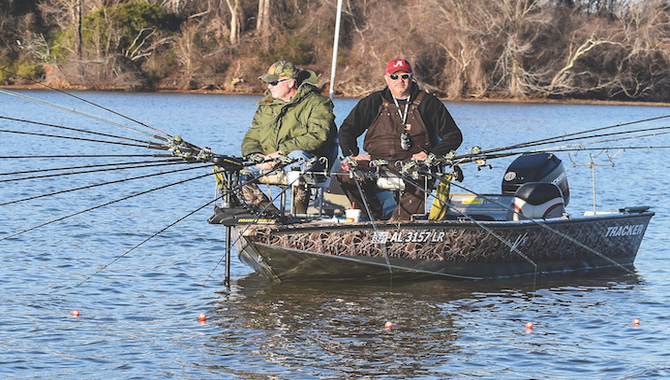
Spider rigging is a fishing technique using a spider rig to catch fish. It’s a cost-effective and easy way to catch baitfish, jigs, and swivel-head lures. The spider rig is a simple but effective fishing system that you can use regardless of the water conditions. It’s the most popular type of trolling with the fishing rod.
You can easily set up the spider rig at the fishing spot of your choice. There are different styles of spider rigging that you can opt for depending on your fishing needs. Step-by-step instructions will guide you through the process of tying the Spider rig.
What you need to consider while using the Spider rig is the size of the bait and line used with the same length as a line in the swivel hooker. Besides, other factors like water depth and weather also play an important role in its effectiveness.
How It Works
A spider rig is a fishing technique that uses multiple baits to attract and catch fish. The spider rig comprises two or more small, weighted hooks attached to a long line. You can tie the line close to the bottom, where bait like worms, bugs, or crickets placing.
Then you let the fish feed on these appetizers until they get hungrily excited and pull up your hook. Spider rigs are especially effective in shallow waters and slow-moving streams because they allow you to quickly cover a lot of ground.
This approach also works well for catching smaller trout, bass, catfish, and other saltwater species. There are several different ways to set up a spider rig: vertical (with baits hanging down), horizontal (side by side), or V-shaped (. Two lines going out away from each other and then back towards each other).
Experiment with different setups until you find one that suits your specific preferences and techniques. Then practice so you can become an expert fisherman if you regularly do. The spider rig is the perfect rigging solution for fishing from the water or the back of a boat. It’s easy to set up and requires minimal equipment, making it the go-to rigging for any fishing trip.
Ways To Tie A Spider Rig Effectively
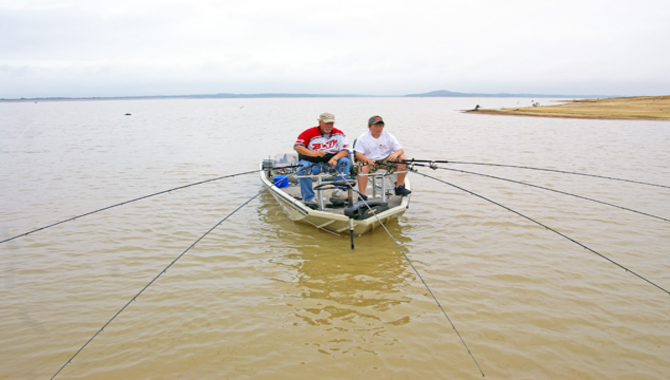
A spider rig is a mining device that uses four or more graphics cards to increase the efficiency of mining Bitcoin and other cryptocurrencies. The name comes from the devices’ web-spinning capabilities, making them look like spiders. Spider rigs are special so that each card works independently to mine different coins.
This way, even if one card fails, the rest of the rig can operate normally. Plus, since each card handles its work, your system is likely to be more manageable and crash.
Spider rigs are also popular because they’re relatively affordable – you can typically build one for around $2,000 US dollars. So why choose a Spider Rig over traditional GPU mining setups? They offer several advantages. Start by making a loop with the line. This creates the spider hook. Scroll down for details.
The Basics

If you’re looking to try a Spider rig for the first time, you’ll need a few essential materials you’ll. If you’re using a paracord or climbing line, ensure the strands are long enough to tie the rig to the tree or post securely. For this, you can use Ie-off material such as a paracord, 550 cord, or a climbing line.
Another essential part of the Spider rig is the spider knot. This knot can tie the line around the tree or post and ensures that the rigging remains secure.
You can use a lighting device (telescope, camera, or monocular) to help you accurately measure the length of the line needed for your rigging. In addition to the materials above, you will need a knot-tying guide and an aging tool if you want to complete the Spider rig properly. Ensure setting up your rigging and are ready to go before tying. Then, follow the abovementioned steps and try out this new rigging.
Setting Up The Spider
Spider fishing is a popular way to catch fish in freshwater and saltwater. It works by suspending bait above the water using a weight. You can make the weight from rocks into a plastic container filled with water. The spider rig is a fishing system that uses the bait’s weight and the water’s force to reel the bait in.
To successfully use a spider rig, you must first set up the fishing line properly. This involves attaching the hook to the line and tying off any loose ends. Next, choose the right weight for your spider rig. This depends on your fishing setup and the bait you use. Finally, practice fishing techniques such as jigging and rigging before heading out to the water.
Tying In The Line: Picking The Right Materials And Technique
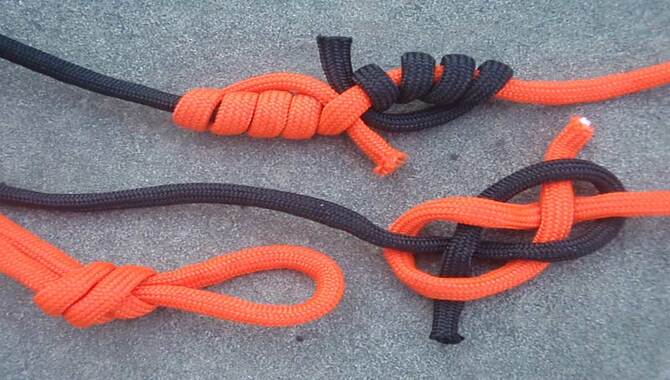
A spider rig is a versatile tying method that you can use for a wide range of fishing applications. Tying a spider rig involves using a line with a weight at the end to create a stationary baitfish. Spider rigs are often used to catch large fish, such as tuna and salmon.
To effectively catch these types of fish, the rig must be designed to capture the prey without causing damage to the line or hook. You can accomplish this by using materials such as sinker-l050 hooks, jigging j0lks, or minnow-style bait.
The most important aspect of rigging a spider rig is choosing the right materials and techniques for the task at hand. When fishing for certain species, it may be necessary to use sinker-l00l hooks instead of jigging hooks or minnow-style bait.
Alternatively, when fishing for smaller fish such as crappie or bass, jigging j0lk may be more appropriate. It all depends on what type of fishing you are doing and the bait you are using.
Making A Hackneyed Knot Work Better
Spider rigs are a popular fishing technique that uses spider knots to secure the bait. Spider knots are versatile and can be used to secure a variety of baits, such as worms, jigs, and frogs. These knots work well when fishing with fishing lines or hook attachments. In addition to the hackneyed knot, fishermen use other knots to secure spider fishing lines.
The surgeon’s knot is a secure knot that you can tie in multiple ways. You can tie it over the line and around the hook, or you can tie it on the hook. Other options include the bead loop knot and the clinch knot.
The hackneyed knot is preferred for fishing with spider rigging because it results in a tighter, more consistent knot. Overall, spider rigs are a great fishing technique that can provide anglers with hours of fun and excitement in the water.
Spider-Rigging Tips For Crappie Fishing
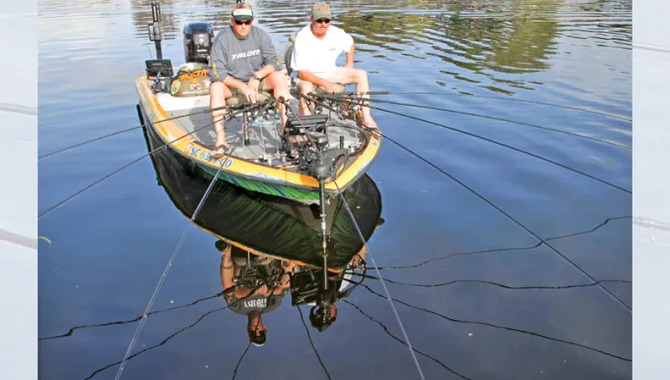
Spider rigs are a versatile fishing technique used for various fishing applications. Spider rigs are composed of a weight, loop, and bait. The weight is attached to the loop, which is then attached to the bait. The bait can be anything from small flies to jigs.
Spider rigs are easy to tie and effective for various fishing applications, including trolling, jigging, and fishing from a boat or shore. They are commonly used by anglers looking to catch fish in freshwater and saltwater environments. Spider rigs are an efficient way to catch multiple fish species with just one fishing line or lure.
- Tie a spider rig using a single overhand knot. This is the most common and easy method of rigging your fishing line. Tie an overhand knot in the line, then secure it to the hook with a slip knot.
- Tie a Spider rig using a bowline knot. This is an effective rigging knot for shallow water, as it allows the angler to adjust the size of the loop without having to re-tie it. It’s also easy to apply and can be used with jigging and trolling applications.
- Tie a Spider rig using an overhand loop knot. This rigging method is perfect for shallow water applications, as it creates less resistance than other knots but still provides sturdy security when attached to the hook.
- Finally, tie a Spider rig using a clove hitch knot. This rigging method is ideal for fishing fast sinking lines in large swivel or swivel reel setups, as it creates minimal friction and requires minimal skill from the angler when rigging the line on the hook.
Conclusion
With spider rigging, you can firmly secure the bait to the hook bait and lure your hook bait to where the fish are. It’s a strong and efficient knot that allows anglers to maximize their chances of landing a big one. The point is to hold the whole thing in place. We will have to use some additional weighted materials. For example, when tying a spider rig, we can also mix up some lead sinkers and hooks.
This way, the fish will be secured for a longer time. In case you don’t wish to use any additional weights, you can tie it with about 8 inches of silk line attached to a soft lead weight or two small lead weights. It just takes a couple of minutes to create this safe rig that lasts long as well. Our information on how to tie a spider rig was useful.
Frequently Asked Questions:
1.How Do You Rig Up For Spider Rigging?
Ans: To rig up for spider rigging, you will need the following: a Spider Rig, weight, jig, leader, and line. The Spider Rig is a piece of fishing equipment that attaches to your line and weights. The weight attaches to the line’s end and helps draw in the fish.
The jig is a small piece of plastic or metal that you can attach to the weight to create movement. The leader is a long line that runs between the Spider Rig and the jig. The line connects the Spider Rig to the jig and allows you to reel in the fish.
2.How Do You Fish A Spider Rig?
Ans: To fish a spider rig, you must put the jig in the water and attach the Spider Rig to it. You can then position the weight to hang below or next to the jig. After rigging up, you are ready to start reeling in your prey.
3.How Fast Do You Have To Be To Spider Rig For Crappie?
Ans: Spider rigging is a popular way to catch crappie in open water. Here’s how it works:
- Set up your spider rig by attaching the spider to the line with a hook or swivel. The spider should be at least 18 inches long, and the jig should be weighted down.
- Place the spider near the bottom of the line, and You should slowly fish up the minnow or jig over the top of it.
- When the minnow or jig is close to the top of the spider, gently lift it out of the water and release it.
4.How Do You Tie A Kentucky Rig For Crappie?
Ans: To tie a spider rig, start by tying a basic fisherman’s knot. Then, add a second knot approximately six inches from the first knot. Make sure that the loops formed by the two knots are big enough to fit over the crappie’s head. Finally, attach your Crappie Jig to the second knot.
5.Where Can I Get A Spider Rig?
Ans: You can purchase online or from fishing supply stores. Spider rigs are a type of fishing gear that uses a weight to suspend a lure above the water. They are commonly used for fishing for game fish such as trout and salmon. Spider rigs can be used for fishing for various types of fish, including catfish, bass, crappie, and walleye.

Leave a Reply